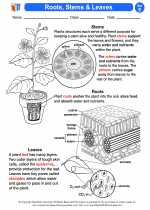Neuron Structure and Function
One of the key elements of neurophysiology is the study of the structure and function of neurons. Neurons are specialized cells that transmit information in the form of electrical signals. They consist of a cell body, dendrites (which receive signals), and an axon (which transmits signals). The communication between neurons occurs at junctions called synapses, where neurotransmitters are released to transmit signals from one neuron to the next.Neural Communication
Neurophysiology also explores the mechanisms by which neurons communicate with each other. When a neuron is activated, an electrical signal, known as an action potential, travels along the axon. At the synapse, the action potential triggers the release of neurotransmitters, which then bind to receptors on the receiving neuron, leading to the generation of a new electrical signal. This process allows for the transmission of information throughout the nervous system.Sensory and Motor Systems
Understanding neurophysiology also involves studying the sensory and motor systems. The sensory system is responsible for detecting external stimuli, such as touch, sound, and light, and transmitting this information to the brain for processing. The motor system, on the other hand, is responsible for controlling voluntary and involuntary movements. This includes the transmission of signals from the brain to the muscles, allowing for coordinated movement and response to stimuli.Study Guide for Neurophysiology
To effectively study neurophysiology, it is important to focus on the following key areas:1. Neuron Structure
- Understand the components of a neuron, including the cell body, dendrites, and axon. - Explore the function of each component and how they contribute to neural communication.2. Neural Communication
- Learn about the process of action potential generation and propagation along the axon. - Understand how neurotransmitters are released and their role in transmitting signals at the synapse.3. Sensory and Motor Systems
.◂Science Worksheets and Study Guides Fifth Grade. Roots, Stems and Leaves
Study Guide Roots, Stems and Leaves
Roots, Stems and Leaves  Activity Lesson
Activity Lesson Roots Leaves
Roots Leaves  Worksheet/Answer key
Worksheet/Answer key Roots, Stems and Leaves
Roots, Stems and Leaves  Worksheet/Answer key
Worksheet/Answer key Roots, Stems and Leaves
Roots, Stems and Leaves  Worksheet/Answer key
Worksheet/Answer key Roots, Stems and Leaves
Roots, Stems and Leaves  Worksheet/Answer key
Worksheet/Answer key Roots, Stems and Leaves
Roots, Stems and Leaves  Vocabulary/Answer key
Vocabulary/Answer key Roots, Stems and Leaves
Roots, Stems and Leaves  Vocabulary/Answer key
Vocabulary/Answer key Roots, Stems and Leaves
Roots, Stems and Leaves  Vocabulary/Answer key
Vocabulary/Answer key Roots, Stems and Leaves
Roots, Stems and Leaves 

 Activity Lesson
Activity Lesson
 Worksheet/Answer key
Worksheet/Answer key
 Worksheet/Answer key
Worksheet/Answer key
 Worksheet/Answer key
Worksheet/Answer key
 Worksheet/Answer key
Worksheet/Answer key
 Vocabulary/Answer key
Vocabulary/Answer key
 Vocabulary/Answer key
Vocabulary/Answer key
 Vocabulary/Answer key
Vocabulary/Answer key

The resources above cover the following skills:
LIFE SCIENCE (NGSS)
From Molecules to Organisms: Structures and Processes
Students who demonstrate understanding can:
Support an argument that plants get the materials they need for growth chiefly from air and water.